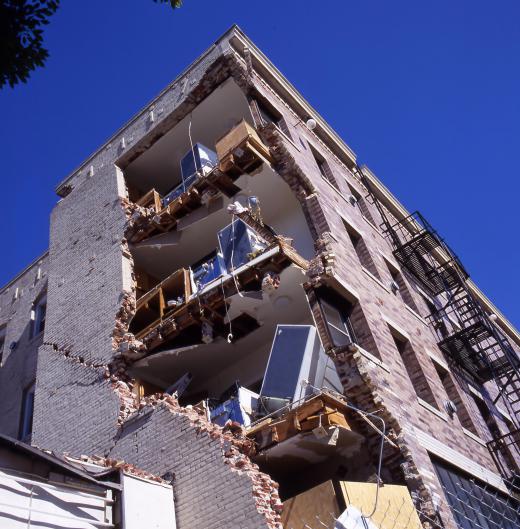What is a Response Spectrum?
Response spectrum is the visual plot of a peak, or other response, of a series of oscillating systems brought about by a shock or strong vibration. Simply put, it is the record of responses to a shock or other motion. The response spectrum is recorded and measured through a series of oscillators, which are devices that go back and forth from a given center or an equilibrium point. One of the more common applications for response spectrum analysis is for earthquake measurement. Oscillators used for measuring earthquakes are especially damped to only move back and forth in one direction
Oscillators can be calibrated to hold steady when the force of seismic waves in the earth are weak or negligible enough. Oscillations made in response to increased seismic activity are also easily damped, whether by friction or elasticity. This makes it easier for progressions and peaks to be observed in a clearer manner. This, in turn, allows for more accurate measurements of seismic waves, specifically with regard to their magnitude, direction, and duration. In fact, this was the concept behind the world’s first seismometers, with a heavy weight suspended in a frame via springs serving as the oscillating system.

The more significant contribution of the response spectrum, however, has to be its utility as a tool for analyzing the strength and resistance of infrastructures. This helps measure how different equipment and structures maintain their integrity in the midst of an earthquake or similar forces. Engineers compare the response spectra of a certain seismic region with a structure’s natural frequency, or the rate the building vibrates when moved.
This comparison gives valuable data on how strong the specific structure can be against intense earthquakes. By determining the building’s present strength, engineers can now build structures with stronger earthquake resistance, and improve the strength of existing buildings in the area. In turn, the government’s building regulations can provide more accurate requirements for engineers to abide by, resulting in safer homes, sturdy buildings, and less devastating outcomes in times of natural disasters.
Applications of response spectrum may be effective, but they also have their limitations. It is most useful for low-rise infrastructures, but not as helpful for skyscrapers and high-rise buildings. This is because engineers need to look into more factors to measure the structural integrity of high-rise structures. These factors, such as wind and fire resistance, cannot be accurately measured by the response spectrum.
AS FEATURED ON:
AS FEATURED ON:











Discuss this Article
Post your comments